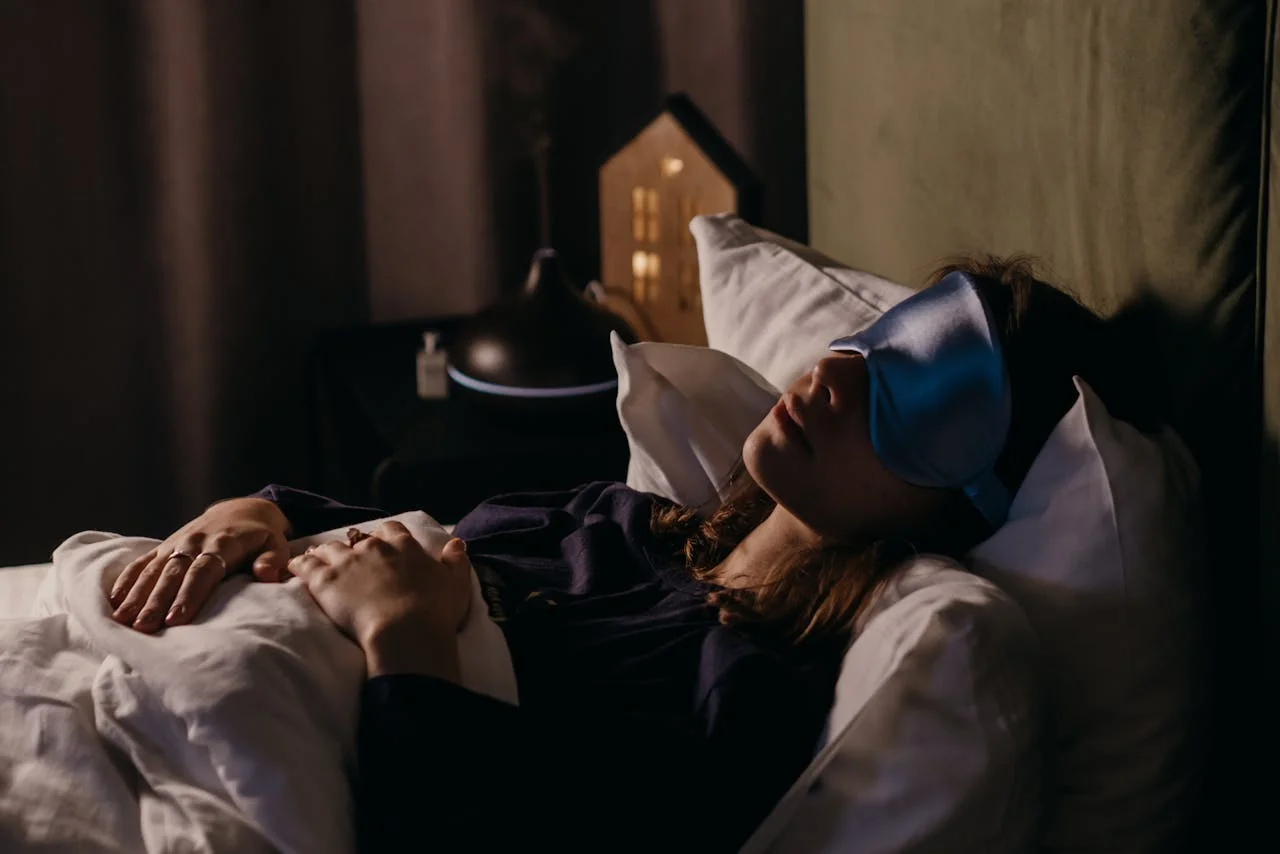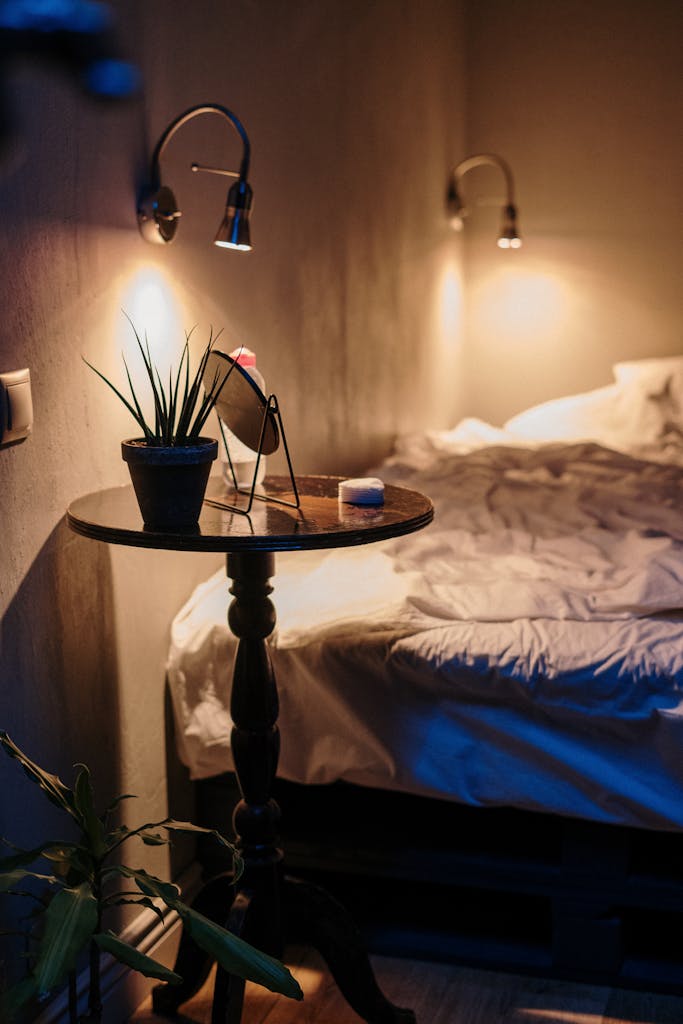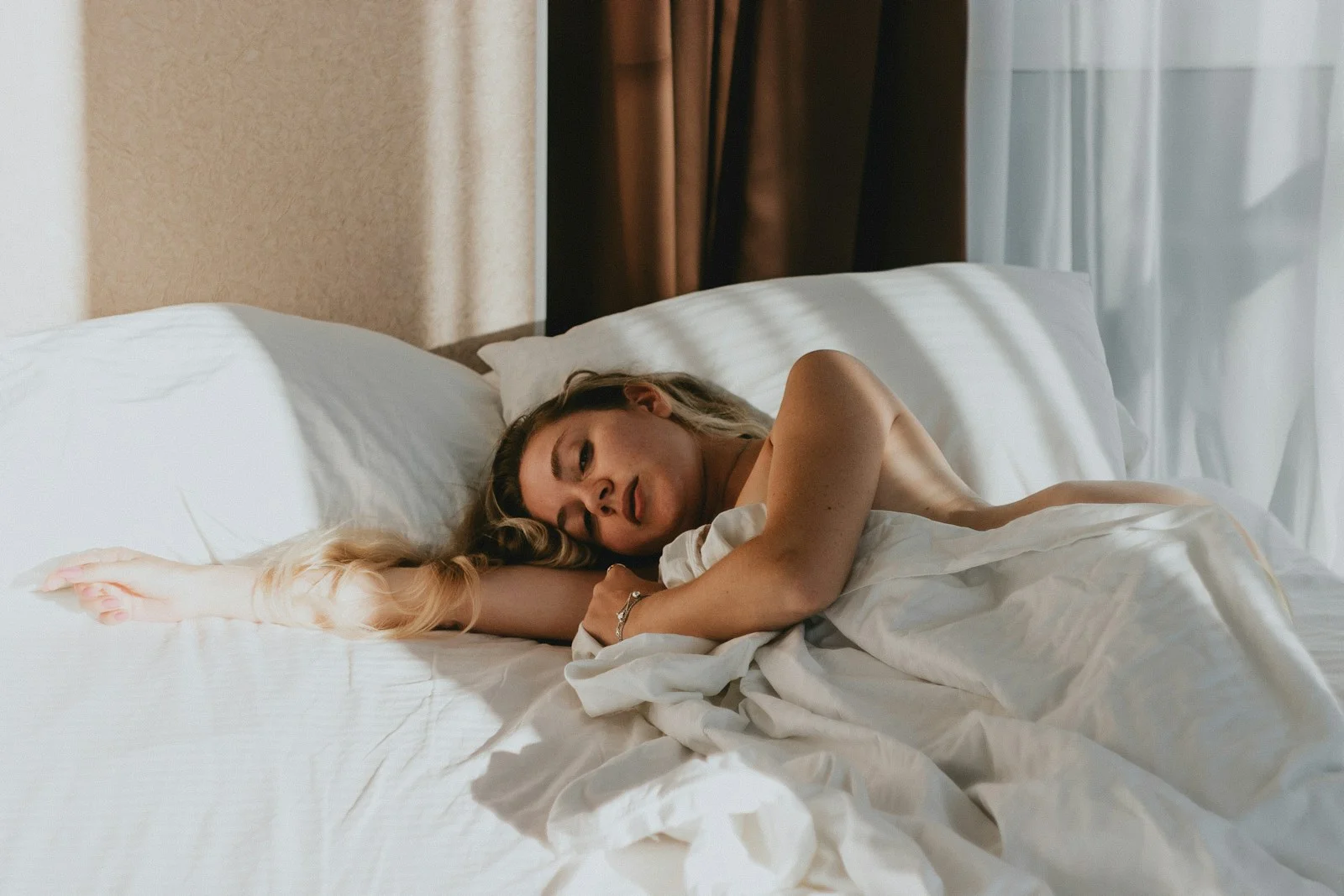
Your bedroom is sabotaging your sleep, and you don’t even know it. I can tell you from years of helping people transform their rest that most folks are sleeping in environments that actively work against their bodies’ natural rhythms. You’re tossing, turning, and waking up exhausted because of eleven specific bedroom mistakes that are surprisingly easy to fix. These aren’t expensive overhauls—they’re simple changes that’ll have you sleeping deeper tonight, but first you need to understand what’s really keeping you awake.
Optimize Your Room Temperature Between 60-67°F
The temperature of your bedroom plays a massive role in how well you sleep, and I can tell you from years of helping people improve their rest that most folks get this completely wrong. Your body naturally drops its core temperature by 2-3 degrees when preparing for sleep, but when your room’s too warm, you’re fighting against this biological process.
Set your thermostat between 60-67°F, with 65°F being the sweet spot for most people. I’ve seen clients transform their sleep quality overnight just by dropping their bedroom temperature from 72°F to 65°F. Your body won’t waste energy trying to cool down, you’ll fall asleep faster, and you’ll experience deeper, more restorative sleep cycles that leave you feeling genuinely refreshed. When your bedroom temperature isn’t optimized, you’ll find yourself tossing and turning for 30+ minutes before falling asleep, which disrupts your body’s circadian rhythm and compounds recovery issues.
Block Out All Light Sources With Blackout Solutions
Even the tiniest sliver of light can sabotage your sleep by disrupting your body’s melatonin production, and I’ve watched countless clients struggle with restless nights simply because they hadn’t addressed this critical factor.
You need blackout curtains that seal completely around your windows, not those flimsy panels that let light leak through the sides. I can tell you the difference is dramatic when you eliminate every source – streetlights, digital clocks, charging indicators, even that annoying hallway light creeping under your door.
Install blackout curtains with wrap-around rods, cover electronics with tape, and use a door draft stopper. Your bedroom should be cave-dark, where you can’t see your hand in front of your face. This single change transforms your sleep quality overnight.
Since a well-designed environment can significantly improve mood, consider updating your computer’s desktop wallpaper to calming, seasonal themes that promote relaxation when you’re winding down before bed.
Eliminate Electronic Devices and Blue Light Exposure

Why do so many people scroll through their phones right before bed and then wonder why they can’t fall asleep? I can tell you that blue light from screens tricks your brain into thinking it’s daytime, suppressing melatonin production for hours.
You need to establish a no-electronics rule at least one hour before bed. Remove TVs, phones, tablets, and laptops from your bedroom entirely. I’ve never seen anyone regret this decision once they experience deeper sleep.
If you absolutely must use devices, install blue light filters or wear blue light blocking glasses. But here’s the truth: complete elimination works better than half-measures. Replace scrolling with reading a physical book or practicing meditation. Your brain craves this digital detox more than you realize.
Using your phone before bed also promotes mental engagement instead of calming the mind, making it even harder to transition into sleep mode.
Invest in Quality Pillows That Support Your Sleep Position
Most people drastically underestimate how much their pillow affects their sleep quality, and I can tell you that using the wrong pillow will sabotage even your best bedroom setup. Your pillow needs to match your dominant sleep position, period.
Using the wrong pillow will sabotage even your best bedroom setup – it needs to match your sleep position.
Side sleepers require firm, thick pillows that fill the gap between your shoulder and neck – I’ve seen too many people wake up with neck pain because they’re using a flat pillow.
Back sleepers need medium support that cradles your neck’s natural curve without pushing your head forward.
Stomach sleepers should use thin, soft pillows or none at all to prevent neck strain.
Don’t cheap out here – quality pillows maintain their shape and support for years, giving you consistent, restorative sleep night after night. For an extra layer of comfort that enhances your sleep environment, consider pairing your quality pillow with organic cotton materials that provide breathability and natural temperature regulation throughout the night.
Remove Clutter and Create a Minimalist Sleep Space

Clutter transforms your bedroom from a peaceful retreat into a stress-inducing obstacle course, and I can tell you that visual chaos directly impacts your brain’s ability to wind down for sleep. Your mind can’t relax when it’s processing stacks of books, clothes draped over chairs, and surfaces covered with random items. I’ve never seen someone sleep deeply in a cluttered room.
Transform your space into a sleep sanctuary by eliminating distractions:
- Remove everything from nightstands except essentials like a lamp and alarm clock
- Clear all surfaces of paperwork, electronics, and decorative items that don’t serve sleep
- Store clothes in closets or dressers, never on furniture or floors
A minimalist bedroom sends powerful signals to your brain that it’s time to rest, not process visual information. Just like minimalist design boosts focus and productivity in workspaces, this approach creates a calm environment that naturally promotes better sleep quality.
Control Noise Levels With Sound-Absorbing Materials
Even a single car horn at 3 AM can jolt you awake and destroy hours of deep sleep, and I can tell you that uncontrolled noise pollution ranks among the biggest sleep destroyers in modern bedrooms. You’ll need to take control with strategic sound-absorbing materials that actually work.
Install thick curtains or blackout drapes, they’ll muffle outside noise while blocking light. Add a plush area rug under your bed, it’ll absorb footsteps and vibrations from floors below.
Mount acoustic panels on walls facing noisy streets, I’ve seen them reduce traffic sounds by 60%. Place soft furniture like upholstered chairs or fabric headboards to break up sound waves.
Don’t forget door draft stoppers, they’ll seal gaps where noise sneaks through. These materials work together, creating your sound fortress for undisturbed sleep. A well-organized physical space can boost focus and productivity, and the same principle applies to your bedroom environment where proper organization of sound-absorbing materials maximizes their sleep-enhancing benefits.
Choose Calming Paint Colors and Bedroom Décor
Your bedroom’s color scheme affects your brain’s ability to wind down just as much as controlling noise does, and I can tell you that harsh or overstimulating colors will sabotage your sleep quality faster than you think. Bright reds, electric blues, and vibrant oranges trigger your nervous system, keeping you wired when you need to relax.
I’ve never seen anyone sleep well surrounded by chaotic patterns or aggressive artwork. Your brain processes visual stimuli constantly, even when you’re trying to rest.
Transform your space with these strategic choices:
- Soft blues and greens – These colors naturally lower your heart rate and blood pressure
- Warm neutrals like beige or gray – They create a cocoon-like environment that promotes security
- Minimal, nature-inspired artwork – Think simple landscapes or abstract pieces in muted tones
Consider incorporating spring flower aesthetics in your bedroom décor through subtle floral prints or gentle botanical artwork that maintains the calming atmosphere while adding natural beauty to your sleep sanctuary.
Improve Air Quality With Plants and Proper Ventilation
While you mightn’t think about the air you breathe during sleep, poor air quality silently disrupts your rest cycles and leaves you feeling groggy the next morning. I can tell you from years of sleep optimization that oxygen-rich air makes the difference between restful sleep and restless tossing.
Place snake plants or peace lilies in your bedroom – they’re powerhouse air purifiers that work overtime while you sleep. I’ve never seen a simpler fix deliver such dramatic results.
Open your windows for 10 minutes before bed, even in winter, to flush out stale air. Install a small fan to keep air circulating, preventing that stuffy, suffocating feeling that wakes you up gasping. Your brain needs clean oxygen to repair itself during sleep, so take control of your air quality tonight.
Beyond cleaning your air, plants improve air quality while adding a calming element that enhances your bedroom’s tranquil atmosphere for better rest.
Position Your Bed Away From High-Traffic Areas
Most people unknowingly sabotage their sleep by placing their bed in the worst possible spot – right in the middle of household chaos. I can tell you from years of helping clients that your bed’s location directly impacts your sleep quality, and most folks get this completely wrong.
Your bed’s location can make or break your sleep quality, yet most people get this crucial decision completely wrong.
Strategic bed placement puts you in control of your environment. Position your bed away from these sleep-disrupting zones:
- Hallways and doorways – Every footstep, conversation, and door slam will jolt you awake
- Kitchen and living room walls – Late-night snacking and TV sounds penetrate thin walls
- Bathroom-adjacent walls – Running water and midnight visits create constant disturbances
I’ve never seen someone regret moving their bed to the quietest corner of their room. You’ll notice the difference immediately.
When your brain can’t distinguish between actual threats and harmless nighttime sounds, even minor noises can trigger your body’s fear responses and fragment your sleep cycles.
Select Breathable, Natural Fabric Bedding Materials

The fabric touching your skin for 7-8 hours every night determines whether you wake up refreshed or drenched in sweat, yet I see people spending hundreds on mattresses while sleeping on scratchy polyester sheets that trap heat like a plastic bag.
I can tell you that switching to natural fabrics like cotton, linen, or bamboo will transform your sleep quality overnight. These materials breathe, allowing air to flow through the weave and moisture to evaporate naturally. Cotton percale feels crisp and cool, linen stays temperature-neutral even in summer, and bamboo naturally wicks sweat away from your body.
You’ll notice the difference immediately – no more waking up overheated, no more tossing off covers, just consistent comfort that keeps you in deep sleep longer. Just as quality sleep is crucial for hair growth and overall health, proper bedding materials create the foundation for restorative rest that impacts every aspect of your wellbeing.
Establish a Dedicated Sleep-Only Zone Policy
When your bedroom doubles as an office, entertainment center, and dining room, your brain never learns to associate that space with sleep, and I’ve watched countless clients struggle with insomnia simply because they’re trying to wind down in the same spot where they answer emails and binge Netflix.
You need to reclaim your bedroom’s singular purpose. I can tell you that establishing boundaries transforms your sleep quality faster than any supplement or gadget ever will.
Here’s what needs to leave your bedroom immediately:
- All electronic devices except your alarm clock
- Work materials, laptops, and anything related to your job
- Exercise equipment, storage boxes, and random clutter
Your brain craves clear signals, and when you enter a space dedicated solely to rest, your nervous system automatically begins preparing for sleep. This isn’t optional—it’s fundamental.
Conclusion
You’ve got eleven powerful changes that’ll transform your sleep tonight. I can tell you from experience, even implementing three or four of these bedroom adjustments will make a noticeable difference within days. Don’t wait weeks to start feeling better—your body’s already craving that deep, restorative sleep. Pick the easiest changes first, then tackle the rest. You’ll wonder why you waited so long to prioritize your sleep environment.





Pingback: 15 Perfect Bedroom Setup for Quality Sleep